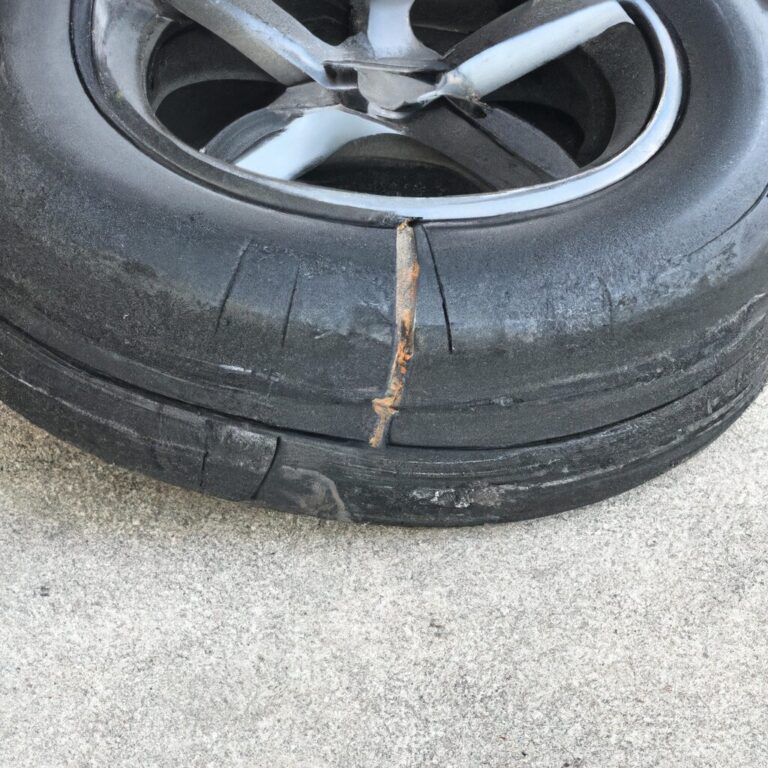Perfecting Color Consistency in Coatings
Color consistency is a critical aspect of the coatings industry. It can make or break any project, affecting how visually appealing and uniform a product looks. Color inconsistencies can not only be frustrating for customers but also indicate underlying problems that could lead to costly mistakes in manufacturing processes. Achieving color consistency across different batches of coatings requires strict control over formulation, application techniques, and quality testing procedures. In this article, we will explore the importance of color consistency in coatings, what causes inconsistencies and how manufacturers can perfect it to ensure their products meet customer expectations every time.
Choosing the Right Coating Equipment for Your Business
When it comes to choosing the right coating equipment for your business, there are several factors you need to consider. First and foremost, you must assess your specific needs and requirements. Do you mainly deal in small or large batches of coatings? What type of coatings do you use? Are they solvent-based or water-based? Once you have a clear understanding of your needs, you can narrow down your choices to the coating equipment that best suits them.
Another crucial factor to consider is the quality of the equipment itself. Investing in high-quality coating equipment will not only ensure better performance but also extend its lifespan, thus providing long-term cost benefits. Moreover, advanced technology such as precision application systems can help achieve optimum color consistency across different batches.
In conclusion, choosing the right coating equipment for your business requires careful consideration and research into each option’s specifications and capabilities. By selecting superior quality tools with modern features that align with your goals and objectives, you can ensure consistent results while optimizing productivity and improving efficiency in production processes.
Benefits of Upgrading Coating Equipment
Upgrading coating equipment can provide numerous benefits to the coatings industry, with improved color consistency being one of the most significant advantages. Upgraded machines and tools are capable of better quality control over formulation, easier application techniques, and more reliable quality testing procedures. This ultimately leads to a higher level of precision in producing coatings with consistent color outcomes across different batches. Additionally, upgrading coating equipment can improve overall efficiency and productivity while reducing waste.
Another crucial benefit that comes with upgrading coating equipment is an increased ability to meet customer demands for specific color blends and formulations. With advanced technology and accurate measurement tools available on updated machinery, manufacturers can achieve precise formulas tailored towards unique client requests. As a result, clients will be satisfied with products that not only have uniformed colors but also match their exact specifications.
In summary, upgrading coating equipment not only improves the quality of manufactured goods but also streamlines the production process itself by reducing errors caused by inconsistent coloring. Whether it’s for visual appeal or practicality purposes required by customers’ specifications – opting to upgrade your coating machinery is an excellent investment choice for any company operating within this vital industrial sector!
Custom Coating Equipment Solutions
Custom Coating Equipment Solutions understand the importance of color consistency when it comes to coatings. Their equipment and solutions are designed to help manufacturers achieve consistent results across batches, avoiding potential manufacturing blunders that could lead to costly mistakes. The company’s commitment is reflected in their name; they offer customized solutions tailored to individual needs and specifications.
By offering customized coating equipment, Custom Coating Equipment Solutions can create systems that work for specific types of coatings or materials. They also provide options such as robots and automated systems, which ensure even greater accuracy and consistency during application processes. As a result, manufacturers using these specialized coatings can be confident in achieving consistent color throughout all stages of production.
Overall, the team at Custom Coating Equipment Solutions recognizes the critical role ensured color consistency plays in product quality assurance programs. That’s why they offer flexible customizations on their products because there’s no one-size-fits-all solution for ensuring color uniformity. With its mission firmly rooted in delivering high-quality custom coating equipment, this company is an invaluable resource for businesses striving towards seamless outcomes with minimal disruption from variations between batch samples or excessive inspection time from internal auditors validating performance criteria before shipping out goods for resale purposes globally!
Specialty Coating Equipment for Unique Jobs
As the coatings industry expands, there are more unique and specialized jobs appearing that demand specialty coating equipment. These unique jobs require specialized formulations that can alter a variety of properties such as color, texture or durability. Specialty coating equipment is designed to meet these needs by accommodating custom formulas and advanced application techniques. With innovations like electrostatic spray guns, airless sprayers, and roll coaters available on the market today, contractors have flexible options for applying various coatings with high precision.
One instance where specialty coating equipment comes in handy is when working with exotic materials where traditional methods won’t suffice. For example, heavy-metal-free coatings for food packaging cause problems for those using conventional systems since they cannot be cleaned out thoroughly enough between production runs which will lead to contamination issues down the line without proper cleaning procedures set up around it from beginning to end. However, switching over to a specialist solution like “robotic painting” enables manufacturers and packagers alike an efficient method while also ensuring uniformity within their products.
In summary: The advancements made in specialty coating equipment have changed how industries cater towards specific customers’ demands and requirements effectively yet efficiently while promoting quality assurance at every step of production all while still fulfilling compliant regulations set forth by governing bodies around particular substrates that might otherwise prove difficult if not addressed head-on beforehand- such as exotic materials used in life sciences manufacturing practices or low heat emissive paints requested due to energy efficiency efforts’ purposes solely.
Coating Equipment Maintenance Tips
Coating equipment maintenance is an essential part of ensuring color consistency in coatings. Regular maintenance checks can prevent equipment failure, which often leads to unplanned downtime and unexpected costs. Equipment owners should follow manufacturer’s guidelines for proper cleaning, lubrication, inspection, and repair.
When it comes to specific coating equipment such as spray guns or mixers, owners should also be diligent about keeping them clean after each use. Any leftover materials or debris can affect the next batch of coatings produced by the same equipment. It is also important to replace any worn parts to avoid leaks and clogs that could damage both the product quality and equipment itself.
Investing in a preventive maintenance program can significantly reduce breakdowns and extend the life of coating equipment. The program involves scheduling regular inspections by qualified technicians who will assess the overall condition of all components including pumps, hoses or nozzles. They may recommend replacing worn-out parts before they fail completely instead of waiting until they are damaged beyond repair.
In summary, having an efficient system for maintaining your coating pans or drums will help ensure that you produce high-quality products consistently while minimizing costs associated with unscheduled repairs or replacement due to poor performance from damaged machinery components caused by dust build-up over time among other issues that plague non-serviced machines used in production industries today like unforeseen downtimes resulting from malfunctioning controls leading production managers scrambling last-minute replacements.-
Coating Equipment Safety Features
Coating equipment safety features are essential in the coatings industry to protect workers and prevent accidents. The use of protective gear such as goggles, gloves, and respirators is vital to safeguard workers from exposure to chemicals and other hazardous materials. Coating equipment should also be equipped with safety guards, covers, and emergency stop buttons that can quickly shut down operations in case of an emergency.
In addition to physical safety measures, coating equipment needs to have adequate ventilation systems that constantly circulate clean air throughout the workspace. This ensures that any fumes or vapors created during the coating process do not accumulate and pose a health risk for employees working nearby. Proper labeling practices like MSDS sheets should also mark all products used so that everyone knows what they are handling.
Overall, having proper safety measures in place is essential for both workers’ well-being and product quality control standards within the industry. Implementing these policies ensures consistency in the final product while keeping those responsible for producing it safe at all times.
Latest Coating Equipment Technology
The coatings industry has witnessed a significant technological advancement in coating equipment, with a focus on delivering perfect color consistency. Latest coating equipment technology leverages advanced software tools and automated processes to provide exact control over colors, hue and shade variations, thus guaranteeing uniformity across batches of coatings. This new development in the industry is critical because even small variances in color can easily be detected by human eyes due to the visual acuity that most people possess.
Modern coating systems have been designed to overcome traditional problems such as uneven film thicknesses or application defects which often affect the final finish of coated products. With sophisticated sensors that detect each layer applied during numerous passes through spray booth, technicians using these latest technologies are able to monitor accuracy of materials usage along with evaluate how well atomization is distributed on surfaces for both consistency and efficiency.
In conclusion, improving color consistency through latest coating equipment technology has become an essential aspect of manufacturing high-quality coated products today. Customers expect perfection from their purchases when it comes down to aesthetics; therefore utilizing this innovative technology helps manufacturers stay competitive by reducing waste while providing clients what they want: visually appealing and consistent finishes everytime without fail!
Importance of Curing
In the coatings industry, achieving color consistency is paramount to producing a high-quality product. Without it, customers may be dissatisfied with their purchase and lead to costly mistakes for manufacturers. Consistent color throughout a product improves its visual appeal and overall uniformity. Achieving this level of consistency requires strict control over several factors including formulation, application techniques, and quality testing procedures.
Color inconsistency could be indicative of larger problems within the manufacturing process that need addressing. It’s important to identify these issues early on so they can be corrected before further damage is done. Additionally, maintaining consistent color in multiple batches ensures all products adhere to predetermined specifications which are necessary for customer satisfaction.
Overall, ensuring perfecting color consistency means more than just aesthetic concerns; it also has financial implications due to rejected lots or entire shipments if the coating does not meet agreed-upon specifications. With these considerations in mind, attention must be paid throughout each step of production and careful monitoring conducted regularly via rigorous testing protocols.
Curing in Powder Coating: Why It Matters
Curing in powder coating is crucial to achieving color consistency and ensuring the durability of the coat. Curing refers to the process of heating a powder-coated surface until it reaches its melting point, allowing it to fuse and create a uniform layer. The curing temperature and duration are critical factors in determining the quality of the final product. If not appropriately cured, coatings can appear uneven, bubbly or peel over time, leading to premature failure.
When it comes to achieving color consistency across different batches of coatings, proper curing procedures become even more critical. Improper curing temperatures or times can lead to variations in color shade and gloss levels that may be noticeable when applied side by side on a single surface or between separate surfaces. This type of inconsistency could ultimately affect customer satisfaction as well as harm your brand reputation.
In conclusion, firms within the coatings industry must take meticulous care regarding their processes’ formulation control application techniques and quality testing procedures for an acceptable outcome.Responsible measures catered towards curb creating inconsistencies intending perfectionism uphold compelling brands’ reputations while retaining satisfied clients for recurring business engagements done right from first-time delivery irrespective offshoring or vis-a-vis operations involved.”


